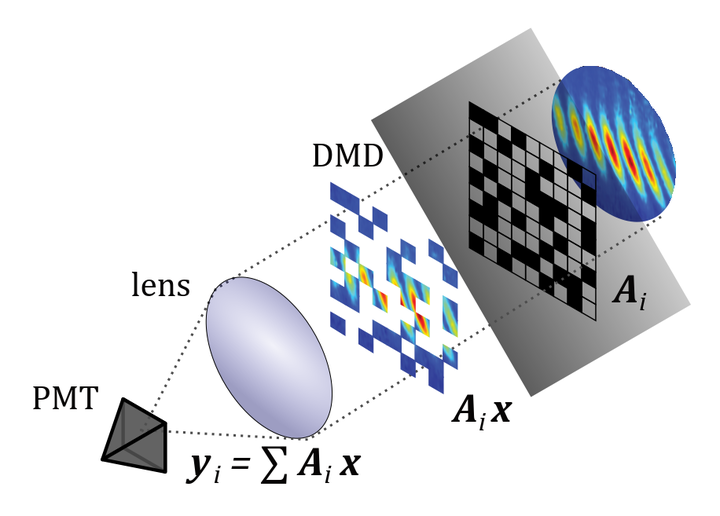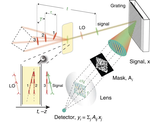Compressive Sensing

Compressive sensing (CS) refers to a class of methods that exploit sparsity to greatly reduce the number of measurements needed to fully characterize a signal.
This is incredibly helpful for experiments (as well as simulations) since it reduces the burden of data acquisition, making for faster experiments with improved signal-to-noise. The method is discussed in more detail in this post. CS has the potential to enable new experiments and capabilities that were not previously feasible, such as densely pixelated 2D image sensors for the infrared and terahertz spectral regimes.
In my research, I demonstrated how CS can be employed in two-dimensional electronic spectroscopy (2DES) to reduce the number of measurements needed to construct a 2D spectrum. I built a detection system from a single-element detector (photomultiplier tube, PMT) and a digital micromirror device (DMD) and used CS methods to reconstruct N-pixel images from only N/10 measurements, representing a compression of 90%.
